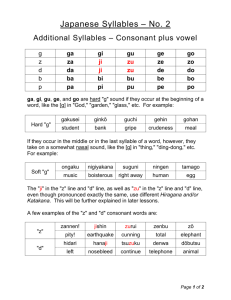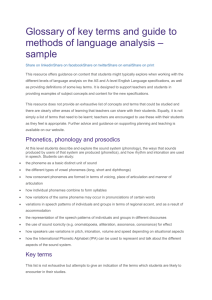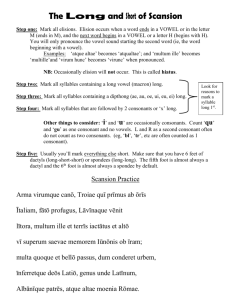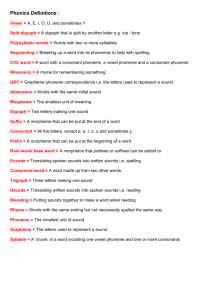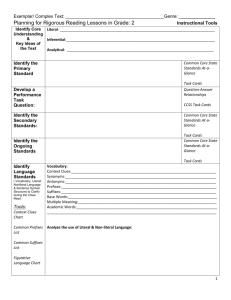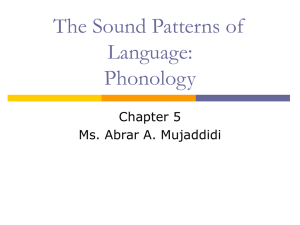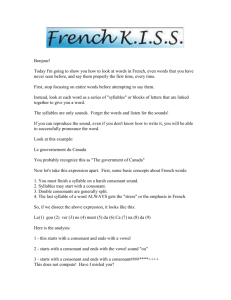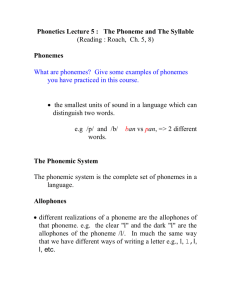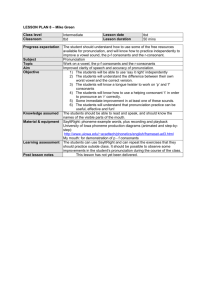Fonetika – pojmy
advertisement
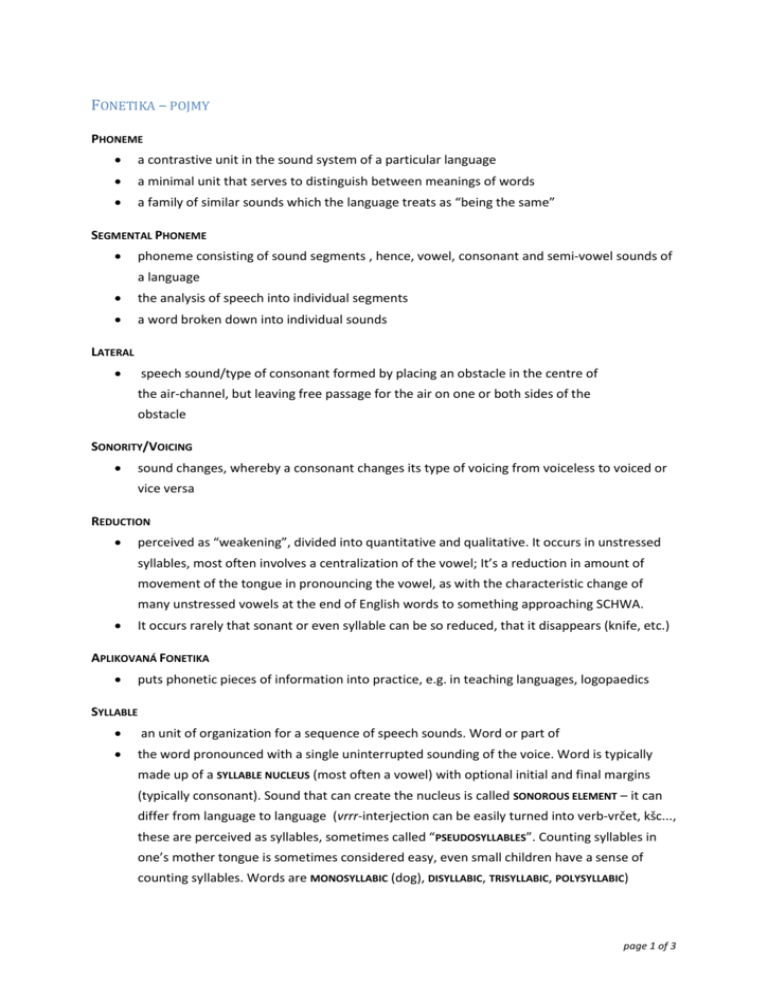
FONETIKA – POJMY PHONEME a contrastive unit in the sound system of a particular language a minimal unit that serves to distinguish between meanings of words a family of similar sounds which the language treats as “being the same” SEGMENTAL PHONEME phoneme consisting of sound segments , hence, vowel, consonant and semi-vowel sounds of a language the analysis of speech into individual segments a word broken down into individual sounds LATERAL speech sound/type of consonant formed by placing an obstacle in the centre of the air-channel, but leaving free passage for the air on one or both sides of the obstacle SONORITY/VOICING sound changes, whereby a consonant changes its type of voicing from voiceless to voiced or vice versa REDUCTION perceived as “weakening”, divided into quantitative and qualitative. It occurs in unstressed syllables, most often involves a centralization of the vowel; It’s a reduction in amount of movement of the tongue in pronouncing the vowel, as with the characteristic change of many unstressed vowels at the end of English words to something approaching SCHWA. It occurs rarely that sonant or even syllable can be so reduced, that it disappears (knife, etc.) APLIKOVANÁ FONETIKA puts phonetic pieces of information into practice, e.g. in teaching languages, logopaedics SYLLABLE an unit of organization for a sequence of speech sounds. Word or part of the word pronounced with a single uninterrupted sounding of the voice. Word is typically made up of a SYLLABLE NUCLEUS (most often a vowel) with optional initial and final margins (typically consonant). Sound that can create the nucleus is called SONOROUS ELEMENT – it can differ from language to language (vrrr-interjection can be easily turned into verb-vrčet, kšc..., these are perceived as syllables, sometimes called “PSEUDOSYLLABLES”. Counting syllables in one’s mother tongue is sometimes considered easy, even small children have a sense of counting syllables. Words are MONOSYLLABIC (dog), DISYLLABIC, TRISYLLABIC, POLYSYLLABIC) page 1 of 3 FONOLOGICKY RELEVANTNÍ SLOVNÍ PŘÍZVUK Position or rather location of word stress changes meaning of a word even if the word has the same sound sequence to present (verb) x a present (noun) PLOZIVES speech sounds/type of consonant (e.g. p,b,t,d,k,g) produced by complete closure of the oral passage and subsequent release accompanied by a burst of air. ORAL STOPS with a PULMONIC EGRESSIVE AIRSTREAM MECHANISM PHONOLOGY the systematic use of sound to encode meaning in any spoken human language. Study of speech sounds of a particular language (only those speech sounds which carry meaning). SEGMENTAL – vowels and consonants ---> phonemes SUPERSEGMENTAL – features which extend over syllables, phrases, e.g. intonation, stress.. Basic unit is PHONEME OBECNÁ FONOLOGIE It studies more languages and deduces general rules and principles. It is fairly abstract and it examines creation of system of phonemes as well. BILABIÁLA-OKLUZIVA BILABIAL – term used for pronunciation using both lips, Occlusive – a consonant produced by stopping the flow of air at some point and suddenly releasing it. TAKT the sense of movement in speech, marked by the stress, timing and quantity of syllables. ARTIKULAČNÍ BÁZE ARTICULATOR SETTING - complex of movements necessary for creation of sound. In English – CONCAVE POSITION of tongue, In Czech – CONVEX POSITION of tongue (set to pronounce ď,ť,ň) SUPRASEGMENTAL PHONEME PHONEMES or features of speech, as pitch, stress and juncture, that may extend over and modify series of segmental phonemes. ASIMILACE a general term for the process by which a speech sound becomes similar or identical to a neighbouring sound / the influence of a sound on a neighbouring sound so that the two become similar or same. Latin prefix IN (non) appears in English as –IL (illegal), -IM (immoral)... hiS Son (S pronounced only once) X hiS daughter (fully pronounced) page 2 of 3 DENTAL CONSONANT that is articulated with the tongue against the upper teeth (in some languages t,d are dental, !!!but English distinguishes between DENTALS and ALVEOLARS!) FRICATIVES consonants produced by forcing air through a narrow channel made up by placing two articulators close together (e.g. lowel lip against the upper teeth –in case of F) JUNCTURE “hraniční signal” a) a pause in speech or a feature of pronunciation that introduces, accompanies or replaces a pause. b) The set of phonological features signalling a division between words, such as those that distinguish /a name/ from /an aim/, /I scream/ from /ice-cream/ AFRICATE CONSONANTS that begins as stops but they are released as FRICATIVES Combination of FRICATIVES and PLOSIVES page 3 of 3
